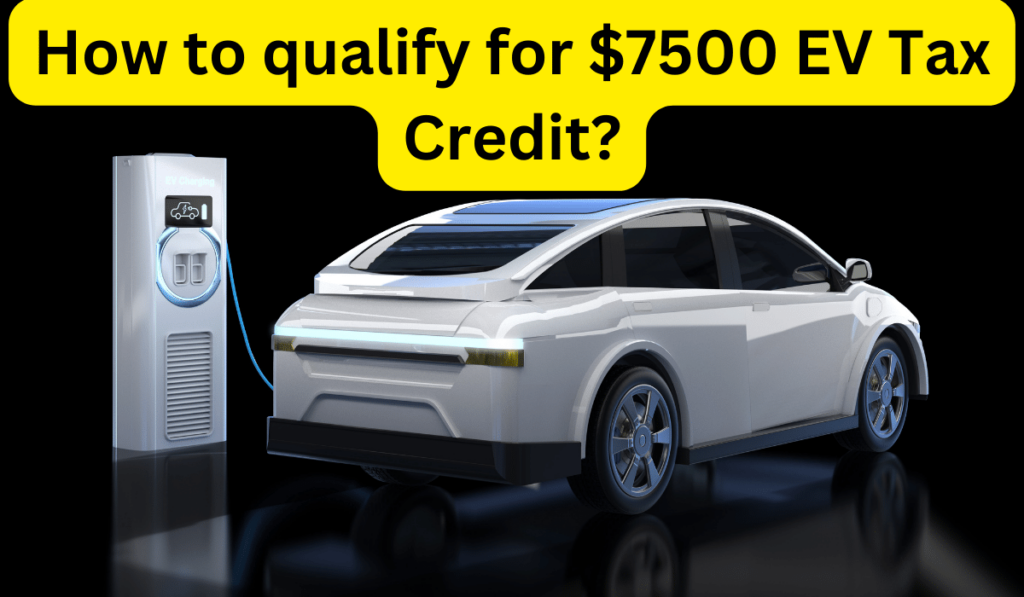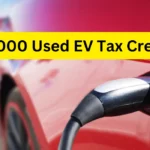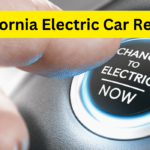Electric vehicles (EVs) have emerged as not only environmentally friendly transportation options but also as potential money savers, thanks to the EV tax credit. This financial incentive, effective from 2024, offers a novel opportunity for EV enthusiasts: the ability to assign the tax credit to a participating dealership, thereby reducing the vehicle’s price upfront.

Who Qualifies for $7500 EV Tax Credit?
To get the EV tax credit, you need to meet certain eligibility criteria:
Buy for Personal Use: You have to buy the car to use yourself, not to sell it later. This ensures that the tax credit benefits individual consumers directly, aligning with the government’s goal of promoting EV adoption among the general public.
Primary Use in the U.S: The electric car should mostly be used in the United States. This rule is important because it helps encourage people to use American-made electric cars more. That helps cut down on pollution and reduces how much we depend on oil for transportation.
Income Limits: The tax credit helps people with different incomes. It’s designed so that more people can qualify based on how much money they make.
- $300,000 for married couples filing jointly
- $225,000 for heads of households
- $150,000 for all other filers
You can use either the amount of money you made last year or the year before, whichever one is less, to figure out your modified adjusted gross income (AGI) for buying a vehicle. If the modified AGI falls below the threshold in either of these years, the credit can be claimed.
Also read:- $7500 Tesla Federal Tax Credit 2024 Income limit, Eligibility details
Qualified Vehicles
Not all EVs are eligible for the tax credit. The following criteria must be met:
Battery Capacity: The vehicle must possess a minimum battery capacity of 7 kilowatt-hours. This ensures that EVs eligible for the tax credit have sufficient battery capacity to provide meaningful electric range, promoting the adoption of vehicles with lower emissions.
Weight Rating: The gross vehicle weight rating should not exceed 14,000 pounds. This criterion ensures that the tax credit is targeted towards light-duty vehicles, which are more commonly used for personal transportation purposes and have a greater potential for reducing emissions.
Manufacturer Criteria:
In simple terms, most vehicles need to be made by a trusted company, but fuel cell electric cars don’t have to follow this rule. This stipulation ensures that eligible EVs meet certain quality and safety standards, providing consumers with reliable and high-performing vehicles.
Final Assembly: The vehicle must undergo final assembly in North America and fulfill critical mineral and battery component requirements. This requirement promotes domestic manufacturing and supports the growth of the EV supply chain within the region, contributing to job creation and economic development.
Understanding some additional factors is crucial when considering the EV tax credit:
New Purchase Only: The tax credit is applicable solely to new vehicle purchases. While this may limit the availability of the credit to certain consumers, it incentivizes the adoption of new EVs, driving demand for the latest technologies and innovations in the market.
Seller Reporting: Sellers are obligated to provide necessary information to buyers during the sale, including name and taxpayer identification number, and also report this information to the IRS. This requirement ensures transparency and accountability in the administration of the tax credit, reducing the risk of fraud and misuse.
Manufacturer’s Suggested Retail Price (MSRP) Limits:
The electric vehicle’s MSRP must not exceed the limits mentioned below:
- $80,000 for Vans, SUVs, and pickup trucks
- $55,000 for other vehicle types
MSRP means the price suggested by the manufacturer that you see in stores. It doesn’t include any extra fees for getting the product to the store.
These limits prevent the tax credit from disproportionately benefiting higher-priced vehicles, ensuring that the incentive remains accessible to a wide range of consumers.
Conclusion
The EV tax credit offers a significant opportunity for both environmental enthusiasts and financially savvy consumers.
By meeting certain requirements and knowing the details about the credit, people can help make the environment cleaner and save a lot of money when they buy an electric vehicle.
As the world moves towards sustainable transportation solutions, leveraging incentives like the EV tax credit can pave the way for a cleaner and more cost-effective future on the roads. Whether it’s reducing greenhouse gas emissions, promoting domestic manufacturing, or saving money on vehicle purchases, the EV tax credit provides a win-win opportunity for individuals and the environment alike.
FAQs
Can I claim the tax credit if I lease an electric vehicle?
No, the tax credit is available only for the purchase of new electric vehicles, not for leasing.
How do I know if a vehicle is eligible for the tax credit?
Eligible vehicles must meet specific criteria regarding battery capacity, weight rating, manufacturer, final assembly location, and MSRP. You can find this information on the vehicle’s window sticker.
Can I combine the federal EV tax credit with state incentives?
Yes, in many cases, you can stack federal tax credits with state incentives, but it’s essential to check the regulations in your state.
What if I exceed the income limits in the year of purchase but not in the previous year?
You could still be eligible for the tax credit if your modified AGI falls below the threshold in the year before the purchase year.
How long will the EV tax credit be available?
The tax credit is scheduled to phase out for each manufacturer after they sell 200,000 eligible EVs. After reaching this threshold, the credit gradually reduces and eventually phases out entirely.
I am the mind behind nammatech.com. I have an experience of more than 8 years in the digital marketing field. The idea behind starting this blog came when one of my friends find it difficult to fill out the application form. So, I came up with an idea to start a blog on this niche.


![Low-Income Housing for Disabled Adults, Seniors Near me [2024] housing for disabled adults](https://nammatech.com/wp-content/uploads/2023/03/Low-income-housing-for-disabled-with-no-waiting-list-near-me-USA1-150x150.webp)
![Low-Income Housing for Seniors near me in USA [2024] Low-income-housing-for-seniors](https://nammatech.com/wp-content/uploads/2023/03/Low-income-housing-for-seniors-150x150.webp)



![Low-income housing with no waiting list near me in [2024] Low-income housing with no waiting list near me](https://nammatech.com/wp-content/uploads/2023/03/Low-income-housing-with-no-waiting-list-near-me-150x150.webp)
